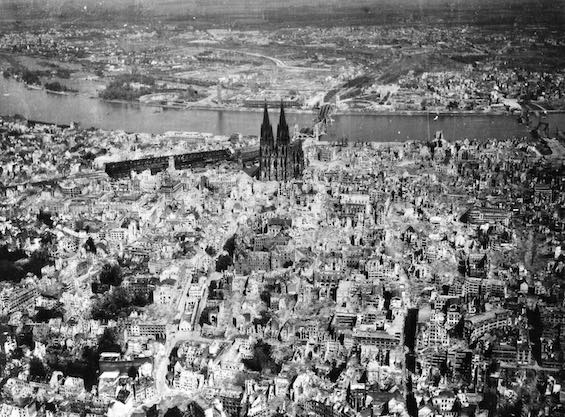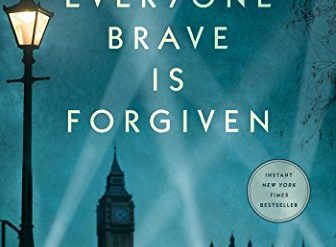
Malcolm Gladwell is right. In his introduction to the 2023 reissue of Bomber, Len Deighton’s portrayal of a single RAF Bomber Command mission in World War II, he refers to the book as “one of the greatest British anti-war novels ever written.” I might go further. Surely, Bomber ranks with classics such as The Red Badge of Courage, All Quiet on the Western Front, and Catch-22. But truly understanding its impact requires an awareness of the context in which it’s portrayed.
Estimated reading time: 6 minutes
The appalling result of area bombing in World War II
Outside Europe and Japan, most people who give any thought to the Allies’s bombing missions in World War II think first, if not only, of the nuclear weapons that dropped on Hiroshima and Nagasaki. But those who know are intensely aware that the loss of life in those two cities, horrific though it was, paled beside the toll of the British and US use of strategic bombing (or area bombing, as it’s sometimes known). The firebombing of Tokyo alone left 100,000 civilians dead and one million homeless. That’s about as many who died at Hiroshima and Nagasaki combined. And it’s less than a third of the overall civilian death toll in Japanese cities, which was at least 333,000.
The impact on Germany was similar. Google calculates that the air raids in Germany left 3.6 million homes destroyed, 7.5 million people made homeless, and 300,000 to 400,000 civilians dead. To bring this terrifying reality down to human scale, Len Deighton focused on a single mission by RAF Bomber Command in 1943. And the result may leave you appalled by the inhumanity of the generals and political leaders who stood behind this misbegotten strategy.
But what is hardest of all to understand is that these raids were launched to weaken the will of their enemies in Germany and Japan. And, just like the Blitz in London and other English cities (43,000 civilians dead), the attacks had exactly the opposite effect.
Bomber by Len Deighton (1970) 498 pages ★★★★★

An RAF Bomber Command mission goes wrong
Deighton compresses the action into a single, twenty-four-hour period. He introduces us to the men (and a handful of women) in a single RAF Bomber Command squadron, with a focus on the men of one crew who fly a Lancaster bomber. Simultaneously, he takes us into the lives of the people who live in the town of Altgarten, a community of some 5,000 people on the Dutch border.
Because of its proximity to an Allied country, the town was off-limits to the bombers. But that order means nothing when the weather turns nasty, planes go off course, and flak and fighters down one of the two pathfinder planes charged with laying down the flares that are to guide the bombers. The result is what the British might have called a royal cock-up. Hundreds die, and British airmen are among them. But it’s even worse than that. As one character in the novel remarks, “There are more casualties of war than the doctor ever sees.”
Don’t think of these revelations as a spoiler. Because it’s obvious from the outset that something will go very wrong on the bombing mission that’s the centerpiece of the story. You’re likely to feel the darkness coming on from the very first page. It’s the details that make it all compelling.
Don’t miss Len Deighton’s afterword
On the Audible edition I listened to, the author speaks at length in an afterword about how he came to write Bomber and about the many sources he consulted. It’s a fascinating account of how a great novelist approached his work. And it casts a bright light on many of the stories included in the novel. I don’t know for sure that this material is included in the new, Kindle edition. If not, it may be worthwhile springing for the Audible book for the afterword alone once you’ve read the text.
About the author

Len Deighton published The Ipcress File, his first novel, in 1962 at the age of thirty-two. (He was born in London in 1929.) The book was an instant commercial success, launching his eight-decade career as an author. His most recent book appeared in 2012. Although he has written scores of novels, history and military history, and many cookbooks, Deighton is probably best known for the ten books about MI6 intelligence officer Bernard Samson. The ten consisted of three trilogies, beginning with Berlin Game, Mexico Set, and London Match from 1983 to 1985, and a prequel. But he began his professional career as a book and magazine illustrator after graduating from the Royal College of Art. Deighton left Britain in 1969 and has lived in many other countries since then.
For related reading
This is one of The 21 best books of 2023.
Be sure to check out Malcolm Gladwell’s own, nonfiction book on area bombing: The Bomber Mafia: A Dream, a Temptation, and the Longest Night of the Second World War (Malcolm Gladwell wades into the debate about strategic bombing in WWII).
I’ve reviewed three other books by Len Deighton:
- Berlin Game – Bernard Samson #1 (A classic novel of Cold War espionage reminiscent of John le Carré)
- Mexico Set – Bernard Samson #2 (In Len Deighton’s classic spy series, Bernard Samson goes to Mexico)
- SS-GB (In an alternate history, the Nazis occupy England)
You’ll find other great reading at:
- The 10 best novels about World War II
- 10 top nonfiction books about World War II
- 25 most enlightening historical novels
- Great war novels
- 7 common misconceptions about World War II
And you can always find my most popular reviews, and the most recent ones, on the Home Page.



























